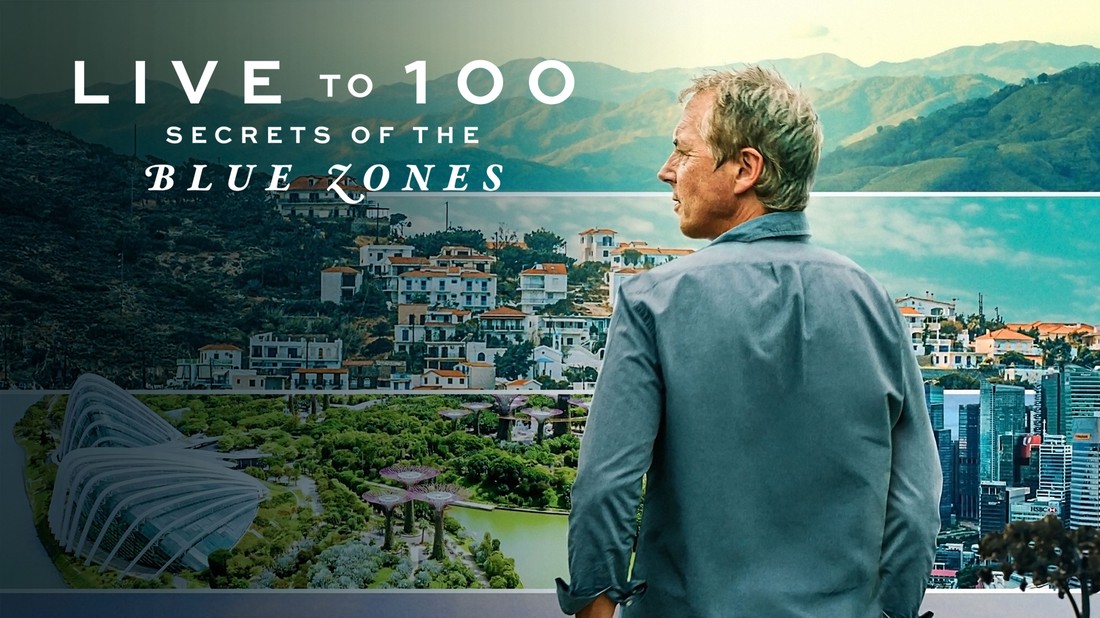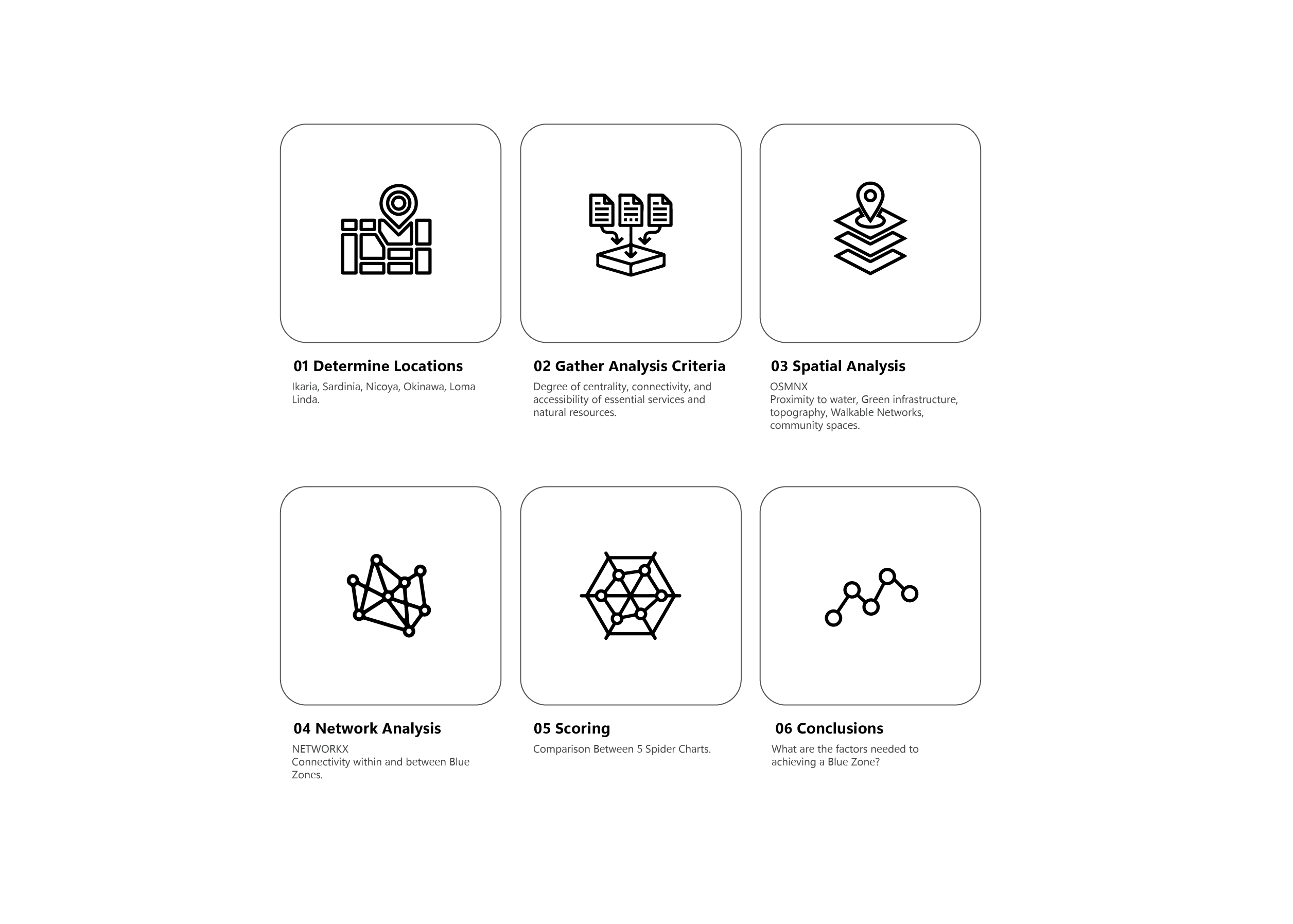
Introduction
The Netflix documentary “Live to 100: The Secrets of the Blue Zones” explores regions known for their high numbers of centenarians, focusing on lifestyle, diet, and culture over geographical aspects. Highlighting commonalities such as strong community ties, plant-based diets, and active living, it aims to inspire healthier lifestyle choices. Although it emphasizes the principles contributing to longevity, it does not extensively map these zones or prove causality through empirical evidence. The film suggests longevity can be achieved through mindful living, encouraging viewers to adopt the beneficial habits observed in these remarkable communities.
Hypothesis
Spatial and geographical features in Blue Zones contribute significantly to the longevity of their populations. (The unique spatial characteristics of Blue Zones—ranging from their urban form and natural landscapes to the density of social networks—play a pivotal role in promoting healthy, long-lived communities.)
Methodology

The methodology is inspired by a blend of spatial analysis and network theory to identify spatial patterns and connectivity within and between Blue Zones. By analyzing the degree of centrality, connectivity, and accessibility of essential services and natural resources, we aim to uncover the spatial foundations of longevity.
We know that they are all isolated town with proximity to water but can we Start scoring to qualify and quantify these zones The following aspects out of 100 for each of the 5 location: Proximity to water, Green infrastructure, topography, Walkable Networks, community spaces.
These aspects are based on knowledge gathered from the documentary.
Diving into one of the Blue Zones
The Land is analyzed based on the walking paths that elderly residents would take daily. The documentary briefly suggests that proximity to water, green infrastructure, topography, walkable networks and community spaces are essential for the longevity of the people.

We can also see, based on a Network analysis that all residents have a community space at a walking distance from their homes, giving them the opportunity to be able to walk at least 30 minutes daily at an incline providing them the chance to exercise without even knowing it.
Scoring
The five Blue Zone were then rated based on these criteria with the intention to show that these are the elements needed to achieve a Blue Zone. However, curiously enough, Loma Linda proved to have a completely different landscape to the other 4 Blue Zone locations.

Conclusion
We can gather that the main 3 causes that lead people to become centenarians are at least 30 mins of movement per day, interaction with a community and a natural diet
Analyzing the spider charts for Blue Zones—Ikaria, Villagrande Strisaili, Nicoya, and Ogimi—reveals shared characteristics in accessible community spaces and extensive walking networks, underlining the importance of social cohesion and physical activity for longevity.
These regions showcase a balanced interaction with natural environments and community infrastructure, emphasizing green spaces, proximity to water, and community centers. Loma Linda stands out due to its urban context but maintains similar values through community urban planning. The common thread across all locations, despite Loma Linda’s unique urban setting, suggests that the essence of Blue Zones lies in fostering easily accessible community spaces interconnected by walking networks, facilitating an active, socially integrated lifestyle conducive to well-being and longevity. The morphology and large concentration of natural farming land in the 4 Blue Zones lead us to conclude that natural diet are also a key element. Loma linda would be an exception in this case because the town is known to have a very large Adventist community which follows a plant based diet.
The project aimed to bridge the gap between spatial analysis and public health, offering a new lens through which to view the complex factors contributing to longevity. By learning from the spatial configurations and connectivity of Blue Zones, we can offer evidence-based recommendations for creating healthier, more connected communities worldwide.

